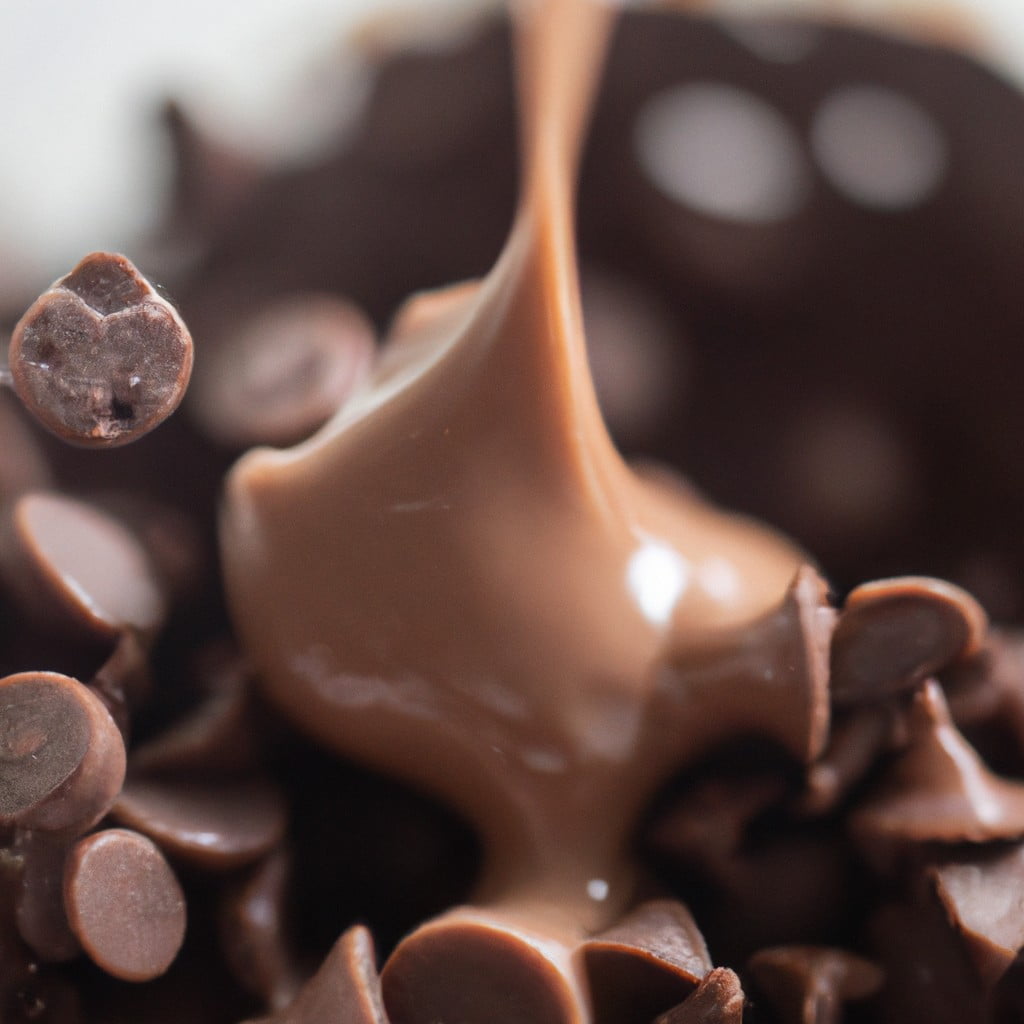This article provides a simple, foolproof method for perfectly melting chocolate chips, that provides smooth, rich results every time.
Key takeaways:
- Use a microwave-safe bowl for even heat distribution.
- Heat chocolate chips in short intervals, stirring consistently.
- Choose a heat-proof bowl and stir gently on the stovetop.
- Avoid any contact with water to prevent seizing.
- Add oil or butter to enhance fluidity for dipping or drizzling.
Inside
Recommended Equipment

For a smooth melting process, having the right tools on hand is essential. A microwave-safe bowl, preferably glass, is optimal for microwave melting because it evenly distributes heat. For stovetop methods, a double boiler is ideal, or alternatively, a heatproof bowl that can sit snugly over a pot of simmering water will suffice. Silicone spatulas are recommended for stirring, as they can scrape the sides of the bowl clean and withstand high temperatures without melting. Lastly, a kitchen thermometer can be very useful for monitoring the chocolate’s temperature to avoid overheating.
Instructions for Melting Chocolate Chips in the Microwave
Choose a microwave-safe bowl, preferably glass or ceramic, for even heat distribution. Pour the chocolate chips into the bowl, ensuring not to overfill it to allow for stirring.
Set the microwave to medium power (50%) to prevent the chocolate from seizing or burning due to high heat. High power can cause chocolate to become grainy.
Heat the chips in short intervals, about 30 seconds to start, followed by 15-second bursts. Stir the chocolate well after each interval to evenly distribute the heat and melt the chips.
Continue this process, stirring consistently, until the chocolate is smooth and completely melted. Be vigilant as chocolate can retain its shape even when melted and can burn if overheated.
If the chocolate hasn’t fully melted after stirring, return it to the microwave for another short burst. Be patient, as rushed melting could lead to a poor consistency.
Once melted, use the chocolate immediately in your recipe to avoid solidification. If necessary, keep the bowl over a pot of warm water to maintain its melted state until use.
Instructions for Melting Chocolate Chips On the Stovetop
Begin by choosing a heat-proof bowl that fits snugly over a saucepan without touching the bottom, creating a double boiler. Fill the saucepan with a couple of inches of water and bring to a simmer, not a rolling boil, to avoid overheating chocolate. Set the bowl of chocolate chips on top of the pan, ensuring the bowl does not come into contact with the water.
Stir chocolate chips gently and consistently with a dry, heat-resistant spatula to promote even melting and prevent any hot spots that could cause the chocolate to scorch. Chocolate burns easily, so keep the heat low and give it your full attention.
As chocolate starts to melt, you may notice a glossy sheen. Continue stirring until completely smooth. Once fully melted, carefully remove the bowl from heat, using a kitchen towel or pot holders to protect your hands from the heat.
Remember, water and chocolate do not mix—any droplets can cause the chocolate to seize and become grainy, so avoid any steam from the saucepan getting into your melting chocolate.
Tips for Successfully Melting Chocolate Chips
To ensure a smooth, even melt, chop larger chocolate chips into smaller uniform pieces before beginning the melting process.
Use low heat, whether melting chocolate chips in the microwave or on the stove. High heat can cause the chocolate to seize or burn.
Stir chocolate chips frequently as they melt to promote even heating and prevent scorching on the bottom.
Avoid any contact with water, as even a small droplet can cause chocolate to seize, turning it grainy and stiff.
Consider adding a teaspoon of neutral oil or butter per cup of chocolate chips to enhance the fluidity of the melted chocolate, which is particularly useful for dipping or drizzling.
If overheating occurs, adding a few unmelted chocolate chips and stirring continuously can help to cool down the mixture and restore a smooth consistency.
When using a microwave, melt chocolate chips in short intervals, stirring between each, to prevent overheating.
To prevent a film from forming, do not cover melted chocolate with a lid as condensation might drip into the chocolate.
Using Melted Chocolate Chips in Recipes
Incorporate smoothly into batters and doughs for an evenly rich chocolate flavor by ensuring the melted chocolate is close to the temperature of the other ingredients to prevent seizing or hardening upon contact.
Enhance the flavor of sauces and glazes with a glossy and smooth consistency by mixing until fully homogenized, preventing any separation or grittiness.
Create chocolate-dipped treats by dipping fruits, nuts, or candies into melted chocolate and laying them on parchment paper to set, resulting in an appealing snap once cooled.
Produce decorative designs by using a piping bag or a fork to drizzle chocolate over desserts, which adds both visual flair and texture contrast.
Thicken or thin the melted chocolate to suit various applications by adjusting the consistency with careful additions of milk, cream, or oil, allowing for versatility across a range of recipes.




